
Review on 🎧 Enhance Your Audio Experience with the NE5532 Stereo Preamplifier DIY Kit: Full Control Over Volume, Treble, Midrange, and Bass Tones by Sandra Egan

I highly recommend this little op amp with tone/voltage preamp! It's fun to build and sounds great!
I create professional quality products with a modular approach. I chose this preamp because it was a do-it-yourself kit and it uses a very popular and very stable operational amplifier (operational amplifier) that has good gain, very good signal-to-noise ratio, acceptable harmonics distortion, a good input impedance and with 400-600mV input signal, it can easily handle any amplifier board of your choice. Other subtleties are numerous; If you look closely at the PCB, the power supply ground and the output signal ground are isolated (not connected), providing a floating signal ground that is useful in many different circuits. Second, the engineer decided to use a full-wave rectifier instead of a half-wave. So if you decide you can use an inexpensive 24 volt center tapped (12-0-12) transformer which when rectified with this full wave bridge will give you +/- 17 VDC as Vin on 78/7915 linear voltage regulators (12* 1.414 = 16.968). This particular solution is also in the safe zone since the filter capacitors are rated at 25V to reduce AC ripple. The other interesting thing is that since there isn't a significant difference between Vin and Vout, AND this thing doesn't suck. large current, you don't need to cool the voltage regulators. I use this type of products as follows: I start with a 2U or 3U 19" rackmount chassis and add a toroidal transformer, full wave bridge rectifier and filter cover board, input select board (+15VDC) and speaker protection board (+12 VDC), Bluetooth receiver board (+5 VDC), this preamp/tone board (+/-12 VAC**), subwoofer low pass filter/summing preamp (+/-18 VAC (+12 VDC), a two-channel Loudness meter driver board (+12VDC), a dual current fix gain amplifier driving 200W at 8 ohms (+56VDC) left/right speakers, and finally a single/mono current amplifier driving a passive one 500 watts into 4 ohms (+48VDC) subwoofer.And sometimes the person ordering a custom amp wants to play vinyl, I add a RIAA (+15VDC) phono stage.**Most op amps are push pull designs , at which the signal crosses zero volts and becomes negative. to positive etc. So you need double the voltage. You can design your preamp around a single ended circuit so you don't need a negative supply, but there are fewer integrated circuits to choose from than push-pull or darlington op amps. You may have noticed that I have several different voltage requirements, with a wide range of AC and DC voltages. Just to digress a bit, I'm ignoring the AC voltage requirements. The diodes that are in the rectifier circuit, either half wave or full wave, have a forward voltage drop of about 1.2V. So in the case of the preamp I'm talking about, I'll only power the board at +/- 180VDC instead. AC voltage. In this particular amp I'm building for someone, the toroidal transformer has a center-tapped secondary that gives me +/- 30 VAC, and with a full-wave bridge it gives me (30 * 1.414 rms to peak) = 43 VDC. Or if I isolate my center tap I can connect the two secondary windings and get 60VAC and then use a full wave rectifier (2 diodes) and power my subwoofer amp that way. To lower these voltages I use either LM 317 or "step-down" DC converters. In this case I use the LM317 and a fixed voltage converter. When I tested the preamp on the test bench, the signal-to-noise ratio (A-weighted) was 92 dB. For a 1kHz signal, my total harmonic distortion with a non-inductive load was 0.062%. The quiescent current was less than 100mA, when fully open it was about 800mA or about 10 watts. Channel Separation -66dB. The dynamic headroom was very impressive - 102 dB! All in all this is a very nice little amp. I really kludge it though. I pulled out the electrolytic capacitors and added two that were rated for 50VDC other than that due to my power supply requirements and what I had available. That was it, although I supplied it with constant voltage and took the 1.2 volt loss, it doesn't really matter due to the built in linear voltage regulators. The finished preamp sounds warm, almost like a tube preamp. However, it remained very clear. I suspect the tone controls probably have a 12dB rolloff. (I'm tired of using my oscilloscope so I'm just guessing here). All in all well worth the money and the one hour it took me to put this thing together. Good quality components including polystyrene capacitors, 1% and 5% resistors and shielded audio potentiometers. I really like how potentiometers work, it's the little things that count. The only caveat I have is that I hate those stupid plugs that come with it. I rarely use them, I always solder everything. I would highly recommend this little board, it is well designed, has high quality components, the PCB is well laid out and has an isolated ground. Get one of these and have fun!
- Wide range
- So so
New products
Comments (0)
Top products in 🍿 Home Theater
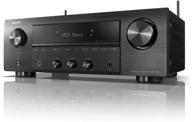
Experience Hi-Fi Amplification and Alexa Compatibility 🔊 with Denon DRA-800H Network Receiver for Home Theater

15 Review

Bluetooth adapter Baseus BA01 black 1 pc.

95 Review
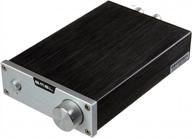
Silver 160W Stereo Digital Amplifier With Power Adapter - S.M.S.L SA-98E For Enhanced SEO

15 Review
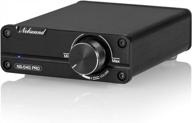
Nobsound Dual TPA3116 Digital Power Amplifier - High-Fidelity Stereo Amp With NE5532P Pre-Amp, Audiophile-Grade 2.0 Channel And 100W×2 Output (Black)

13 Review
Another interesting products
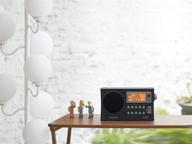
Sangean PR-D4W Portable Weather Alert Radio with AM/FM Bandwidth Narrowing and Auto Tracking for Improved Searchability

12 Review
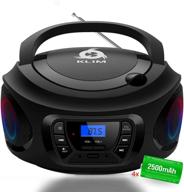
KLIM CD Boombox Portable Audio Player with FM Radio, Rechargeable Battery, Bluetooth, MP3, AUX, Neodymium Speakers, and Upgraded CD Laser Lens (2021 Edition)

11 Review
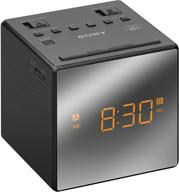
Sony ICFC1TBLACK Alarm Clock Radio

11 Review
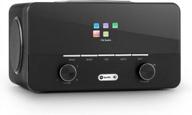
AUNA Connect 150 Black 2.1 Wi-Fi Internet Radio Music Player With MP3 USB Port, AUX & Remote Control - Black

16 Review

